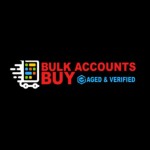Gmail Marketing Guide: 5 Strategies to Succeed
Gmail Marketing is a type of digital marketing that involves sending promotional emails to a list of subscribers who have given permission to receive them. The emails can include information about products or services, special offers, or other relevant content. The goal of Gmail Email Marketing is to engage with subscribers, build relationships, and drive revenue. It is important to personalise the emails to make them more relevant to the individual subscriber and to track performance metrics like open rates, click-through rates, and conversions to optimize future campaigns. Overall, Gmail Marketing can be a powerful tool for businesses to connect with their audience and generate revenue
Why is Gmail marketing important?
Gmail Marketing is important because it is considered one of the best ways to communicate and stay in touch with your customers. Through Gmail Marketing, businesses can send targeted and relevant emails to their subscribers, providing them with valuable information about products, services, and promotions. This can help build brand loyalty, increase customer engagement, and drive sales.
Moreover, Gmail Marketing offers advanced features such as segmentation, automation, and analytics that enable businesses to track and optimise their campaigns, resulting in higher conversion rates and ROI. By leveraging the power of Gmail Marketing, businesses can create a lasting impression on their customers and stay ahead of the competition.
5 Strategies to Succeed
Build a Quality Email List
The foundation of successful Gmail Marketing is a quality email list. It is very important to ensure that your customers or subscribers are interested in the business you run. To build your list, consider using opt-in forms on your website or social media, offering incentives such as discounts or exclusive content, or partnering with other businesses for list swaps.
Optimize Your Preheader Text
The preheader text is the snippet of text that appears below or next to your subject line in the inbox preview. This is another opportunity to entice your subscribers to open your email. Keep it brief and informative, and use it to complement your subject line and provide additional context.
Include Social Sharing Buttons
Social sharing buttons allow your subscribers to share your email content on their social media platforms, increasing your reach and visibility. This can also encourage new subscribers to join your list. Be sure to include prominent social sharing buttons in your emails and encourage your subscribers to share your content.
Use A/B Testing
A/B testing involves sending two versions of an email to a small portion of your list to determine which version performs better. You can test different elements such as subject lines, calls to action, content, or send times. Once you identify the winning version, you can send it to the rest of your list for better results.
Leverage Triggered Emails
Triggered emails are automated messages that are sent to subscribers based on their behaviour or actions. Examples include welcome emails, abandoned cart reminders, or post-purchase follow-ups. Triggered emails can be highly effective because they are timely, relevant, and personalised.





Comments